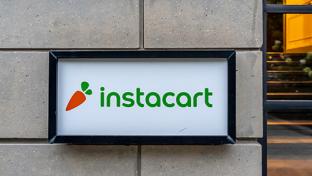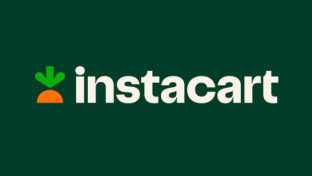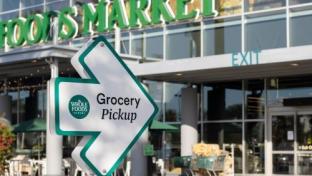Instacart Is Ready for the ‘Groceryssance’
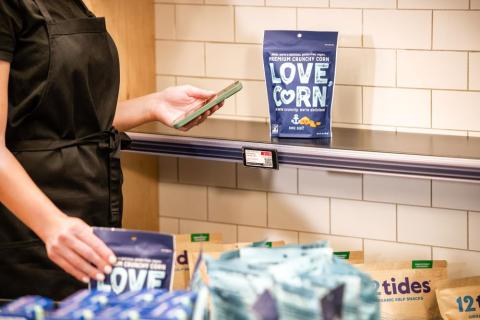
To understand just how much food and the grocery industry mean to Instacart CEO Fidji Simo, it helps to visit her kitchen in Carmel-by-the-Sea.
On a gloriously sunny California afternoon, the French-born Simo (pictured above), CEO of the 10-year-old e-commerce startup that transformed the grocery industry, is busy juggling meetings, interviews with journalists and baking. Or rather, helping her husband, Remy, test the baked goods.
Sitting down to chat in the garden, Simo looks at Remy, who has emerged from the kitchen with a tray of sweets that smell of the boulangeries and patisseries in Europe. It’s a gesture that Simo traces to her roots growing up in a family of fishmongers in southeastern France.
[Read more: "Instacart Extends Ad Offerings to More Brands"]
“All of the men in my family are fishermen. Food is very deeply rooted in me, and that’s why I was so attracted to the mission of Instacart,” Simo says. “To me, food is an expression of love; it’s how we celebrated everything.”
Simo’s love of food, however, was not to be surpassed by another passion: technology. “I was also always fascinated by technology; that’s why I studied business,” she explains.
After finishing business school, Simo started her career in Silicon Valley at eBay and “really fell in love with what technology could enable.” She later moved to Facebook, where she spent 10 years developing platforms, led the mobile monetization strategy and “made video a critical part of the Facebook experience.” Then, for her last two years at the company, she “was leading the flagship Facebook app, which was the privilege of a lifetime.”
Now Simo, who was named CEO of Instacart in August 2021, is tasked with leading the next phase of growth for an estimated $13 billion company that’s preparing to possibly go public at a turbulent time not just for the stock market, but also for the grocery industry and the economy.
The question on everyone’s mind: Does Simo’s plan to grow Instacart involve it becoming a retailer? She has thoughts on the matter — but more on that later.
For now, Simo says that she’s focused on fine-tuning Instacart’s business model to be more of a grocery technology company than a grocery delivery/pickup company, a partner to grocers that understands the challenges they’re facing and helps them thrive, no matter the obstacle.
“We want to be the tech backbone of the industry to really help retailers address all of these challenges,” she asserts. “We really want to make sure that retailers have the tools that they need to compete, whether it’s against Gopuff, Amazon or whoever. What we’re trying to do is design all of the technologies that enable the grocery store of the future, where online and offline operate together, with the best of online, which is personalization, etc., coming to offline, and the best of offline, which is discovery, coming to online. We want to make sure that journey is completely seamless.”
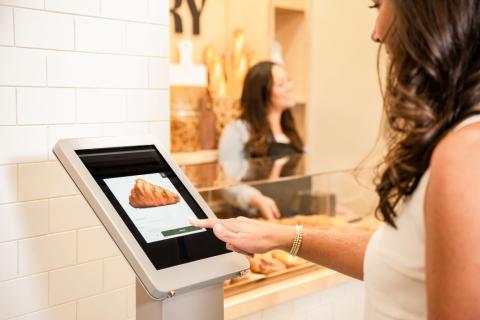
10 Years of Instacart
It’s hard to believe that Instacart has already been around for a decade.
For many retailers, Instacart was the first e-commerce lifeline at a time when many in the grocery industry weren’t even familiar with terms such as “pickers,” “fulfillment centers” or “substitutions.” The pandemic supercharged growth at the San Francisco-based company, which saw order volumes surge more than 300% in early 2020, and then drove record volume and revenue in 2021, helping it become the dominant grocery technology company in the United States. Today, Instacart partners with more than 900 national, regional and local retail brands to facilitate online shopping, delivery and pickup services from more than 75,000 stores across 13,000-plus cities in North America.
But digital grocery sales have moderated due to shoppers returning to physical stores, and price sensitivity around inflation; in October, the monthly Brick Meets Click/Mercatus Grocery Shopping Survey showed that total U.S. online grocery sales in September declined 3% year over year to $7.8 billion, although third-quarter online grocery sales for 2022 gained nearly 4% to $24.1 billion compared with 2021. Meanwhile, grocery e-commerce competitors have bubbled up and grocers have started launching their own digital solutions as they look to keep more of the power of consumer data to themselves.
According to Simo, the best way to navigate “rough waters,” whether it’s inflation, competition or finicky consumer behavior, is by aligning with a mission and getting your employees really motivated for the vision.
“The main thing I wanted to do to mark our anniversary was get the company together for a day and use that time to connect with the team on the vision for the next 10 years,” she says. “So we really laid out what the next 10 years could look like, the real at-scale problems that we could solve for the industry. People reacted very well and were super-excited. When you’re very clear on where you’re going, you can lead the team through it, and so that’s something I always double down on.”
Instacart filed a confidential draft registration statement with the Securities and Exchange Commission in May. Simo won’t comment on the timing for an IPO, but she says that the company is busy adding solutions for retailers that focus on the three pillars of the business: the Instacart App, the Instacart Platform and the advertising arm.
“In all three of these areas, we’re developing a lot of innovation that can drive our growth,” she notes. “On the Instacart App side, we are continuing to increase the number of retailers that we work with. We now have retailers that represent 80% of the U.S. grocery market. We’re also continuing to expand our use cases — not just grocery, but also convenience, pickup, ready meals and catering. We’re driving online adoption through partnerships and marketing as we go from about 10% online penetration today to an estimated 20% to 35% of sales within the next five years. And we’re doing a lot to make the grocery experience less about pure utility and more about inspiration.”
This year, Instacart launched its Connected Stores suite, which features six new Instacart Platform offerings: the Caper smart cart, Scan & Pay, Lists, Carrot Tags, FoodStorm Department Orders, and Out of Stock Insights — modular technologies that help retailers connect online and in-store experiences. Simo says that the company launched the suite based on feedback from grocers that are having tech challenges on their own properties.
“We’re basically taking all the innovations that we’re developing for our marketplace, and we’re building them in a way so that we can put them in the hands of retailers,” she continues. “A lot of technology partners are addressing just one particular piece of the grocer’s tech problem. But we look at the entire ecosystem, and what grocers are telling us is that they like that we’ve already tested our technologies with the consumer. So we know what works, because it’s already been proven on our marketplace. That’s something that other technology partners cannot provide.”
The other advantage to the Connected Stores suite, Simo points out, is that grocers’ technology teams don’t have to piece together various disparate solutions. Rather, Instacart’s offering “is a set of technologies that are modular, so if you have your own thing in some areas, and you just want a piece of our platform to enhance your existing experience, you can have that in a modular way,” she explains. “But if you want a whole thing brought together, you can also get that.”
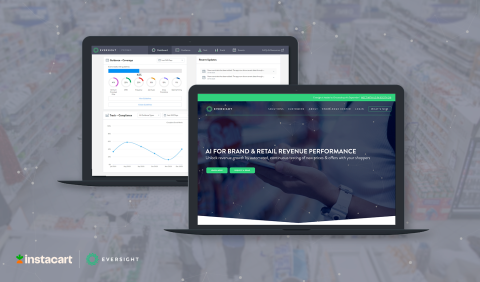
Growing the Pie
In the past few months, Simo’s team has been on an acquisition spree as it looks to become a one-stop grocery technology shop for grocers.
In early September, Instacart acquired Ithaca, N.Y.-based Rosie, a premier e-commerce platform for local and independent retailers and wholesalers. Rosie, founded in 2013, offers independent grocers branded e-commerce websites and mobile app capabilities that power order flow, fulfillment and customer insights. Its product features include shoppable weekly ads, store loyalty and rewards program integrations, third-party fulfillment logistics integrations, and payment processing, all developed for local and independent grocers. With this acquisition, Instacart has debuted new e-commerce solutions built specifically for local and independent retailers that complement the company’s existing Instacart Platform offerings.
In May, Rosie helped Dash’s Market, a family-owned grocery chain with four locations in and around Buffalo, N.Y., launch Supplemental Nutrition Assistance Program (SNAP) online payments. Dash’s Market was Rosie’s second independent retailer partner to go live accepting SNAP payments online, just weeks after Davis Food & Drug, in Utah, launched such a program.
The Rosie deal marked Instacart’s fourth acquisition in the past year. Instacart also acquired Palo Alto, Calif.-based Eversight, an artificial intelligence-powered pricing and promotions platform for CPG companies, in August. Through Eversight’s experimentation-based platform, CPG brands and retailers can continuously test customized pricing and promotions directly with their individual customers, at scale. This automates processes that have traditionally been highly manual and time-consuming, and lets brands and retailers engage in shopper-centric optimization.
Eversight’s CPG offerings will be part of the Instacart Ads product and technology suite, which provides CPG brand partners with measurable advertising opportunities and insights capabilities. For retailers, Eversight’s retail technology will be part of the Instacart Platform, a suite of enterprise-grade solutions that enhances and digitizes grocery retail to create an omnichannel experience for customers.
“The idea with these two acquisitions is really to take companies that have developed a strong expertise in one part of the market — Eversight in pricing, Rosie with independent grocers — and connect them with our ecosystem so we can give them scale,” Simo said. “In the case of Eversight, we’re really excited about the fact that it will result in a win-win for all partners by making the experience more affordable for consumers while also helping retailers and CPGs find their pricing sweet spot to optimize margins, which is going to be really important during this time.”
Last year, Instacart acquired smart cart maker Caper AI for $350 million and catering software firm FoodStorm; both companies are based in New York. In September, Instacart debuted a new version of Caper’s smart cart that comes equipped with scales, sensors, touchscreens and computer vision technology. The screen helps shoppers navigate the store, and unlike self-checkout terminals and other smart carts, the proprietary scanless technology means that shoppers don’t have to manually scan items. They can just drop them in the cart, bag groceries as they go, and check out right from the cart.
According to the company, the new Caper Cart is slimmer and lighter, holds 65% more than the previous version, and will be rolling through the aisles of retailers such as Keasbey, N.J.-based Wakefern Food Corp. in the coming months. It’s the only smart cart on the market to offer stacked charging, which means that grocers don’t have to charge carts individually or swap out batteries.
“In-store tech is a big opportunity for us,” Simo notes. “FoodStorm has kiosks where customers can do the ordering inside the store for catering, but they can also order online, and the Caper carts reduce lines at checkout and make store operations more efficient. If you have smart carts inside the store with personalization on the screen of the cart, it enhances the store experience dramatically.”
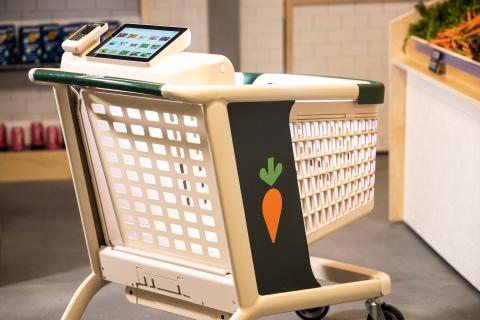
Fighting Inflation
In September, the consumer price index increased 0.4% for the month, more than the 0.3% Dow Jones estimate, according to the Bureau of Labor Statistics. On a 12-month basis, so-called inflation was up 8.2%, off its peak of around 9% in June, but still hovering near the highest levels since the early 1980s. With inflation persisting at a 40-year high, Simo says that she’s working to help grocers overcome the inflationary challenges affecting consumer behavior.
“Right now, a big thing that we’re focused on is making the service more affordable,” she observes. “One of the things that we’re doing is making deals and discounts more accessible to people, which is why we created the Deals Tab. We can onboard value retailers that are on the more affordable end; that’s why we created a dollar hub. Then, when it comes to our membership, we want to continue providing more value, so with Instacart+, we relaunched it and we added the ability to have what we call family accounts.”
Another inflation-fighting focus for Simo has been expanding SNAP. Over the past two years, Instacart has pioneered the EBT (electronic benefit transfer) SNAP retailer onboarding process, which has enabled EBT SNAP payments nationwide with more than 70 retailers and banners spanning more than 8,000 stores across 49 states and Washington, D.C. Today, the company has a goal of expanding EBT SNAP payment access to all Instacart grocery partners by 2030.
Simo says that Instacart customers three years ago tended to be much more affluent than the average U.S. population, “whereas right now, if you look at our split of consumers, we actually map very closely to the U.S. population in terms of income, which to me is incredibly important.” It’s a metric that she tracks very closely because she wants to make sure that online grocery is something that’s accessible for all.
“So many people tell us that they’re saving time, they’re saving money on transportation costs, they’re managing their budget better,” Simo says. “They can also start making healthier choices.”
Instacart’s SNAP efforts are part of its new health initiative that aims to increase nutrition security, make health choices simpler for consumers and expand the role that food plays in improving health outcomes. The initiative launched in coordination with the White House Conference on Hunger, Nutrition and Health in September.
“America’s health problem is actually a food problem,” Simo explains. “That’s why we launched Instacart Health, because we think health starts with good nutrition. And that’s why we’ve developed technologies for providers, nutritionists and dietitians to prescribe food in the same way as they would prescribe medicine.”
In terms of grocery e-commerce consumer trends, Simo says she’s “seeing people just want a lot of different things and have different needs, even across the same week. We are continuing to seize the need for convenience. Our convenience business is a segment of consumers who on occasion are ready to pay more to have their deliveries delivered faster, and it’s part of the business we’re continuing to see expand.”
She notes that people “always ask her whether quick commerce is dead,” now that so many entrants and innovators in that space seem to be foundering, but the reality is a bit more complicated than that.
“Quick commerce as a single use case is not sustainable on its own, but what we want to offer is all the possible options priced the right way,” Simo says. “So, yes, if you want to pay more for faster delivery, by all means. Sometimes we need something urgently, but there’s going to be other times where you’re just ordering your weekly shop, and it’s totally fine if it arrives within an hour.”
Grocers are telling Simo that options are what they want, because they want to capture all of these opportunities.
“They want to be there for their customers, no matter how their customers want to shop,” she affirms, “and so, if they have a technology partner that can help them provide all of these options, it’s great for them.”
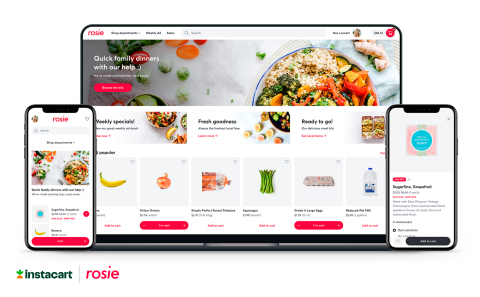
Pipeline for the Future
Earlier this fall, the city of San Diego revealed that Instacart had agreed to pay a $45 million settlement to resolve claims that the company misclassified more than 300,000 of its delivery workers, which Instacart calls “shoppers,” as independent contractors over a period of five years. Instacart has denied any wrongdoing and continues to maintain that it has at all times correctly classified its delivery workers. According to Simo, however, the company has been listening to its workers and making some changes.
“When I first got into the job, I spent a number of months really listening to what the shoppers needed,” she notes. “We addressed the biggest pain points. Ratings were generating a ton of anxiety, as they were worried that their ratings would impact their access to work. We’ve been able to make progress on that. We’ve also changed the rules for when a customer is able to change their tip after delivery. That’s a way for shoppers to have more of a guarantee that when they get a tip, it sticks.”
The company has also introduced various new benefits and perks for its community of more than 600,000 shoppers this year.
In October, Instacart launched peak earning days, a feature providing shoppers with information about certain days that will offer higher earnings opportunities in specific areas, so they can plan for the week ahead. Earlier, in July, the company introduced Cart Star, a new rewards program for shoppers. Every qualifying shopper in the Cart Star program will receive tailored rewards and offerings through third-party partners, as well as directly within the Instacart Platform. Other features that Instacart has added for shoppers this year include new shopper app features and several upgrades to the customer tipping process.
As for senior leadership at Instacart, Simo says that she’s thrilled about her newly enhanced executive ranks.
“I just have a really incredible management team at this point, and am so very, very excited about that,” she enthuses. “We’ve added roughly 20 VPs in the last year, and we’ve really bolstered the ranks even under that C-suite level. We feel like we’re really well positioned to tackle our bolder vision. I think the most important thing is showing your employees not only that you care, but also that you’re going every step of the way to do the right thing by them.”
When she thinks about the future of grocery, however, Simo admits that there’s still a lot of work to do.
“Grocers still haven’t solved search technology so that people always can find what they need online,” she says. “They still haven’t solved how to identify the best substitution when they’re out of stock on something, personalization or online merchandising. That’s where we come in.”
Her advice for grocers trying to stay ahead of what’s next is the same counsel she follows at her own company: Have a portfolio and start planting seeds for things that you think your customers are going to need in the future.
“The way we prioritize innovation is ... we listen to our customers, we listen to our retail partners and we prioritize accordingly,” she observes. “Even on something like advertising, for example. We could see the trend of retail media becoming big. But if you are a grocer, setting up an entire retail media organization on your own is pretty hard. So, if we can take everything we’ve learned about advertising on Instacart and put that in the hands of retailers, that’s pretty powerful. A lot of what we do is we start testing things on our marketplace and we then bring that to retailers.”
The major growth drivers for Instacart, according to Simo, include launching new partner services, whether it’s in-store tech, convenience, alcohol, pickup, advertising or retail media. The one thing that won’t be driving growth, though, is becoming a retailer.
“We are not planning on becoming a retailer; in fact, our strategy is the exact opposite,” Simo says. “We want to empower retailers with the technologies that we build. We do not want to compete with them. If you look at all of our announcements in the last year, they are all about empowering grocers and taking our secret sauce and making it available to grocers on their own sites, inside their own stores, and really enabling them to compete better in that world.”



